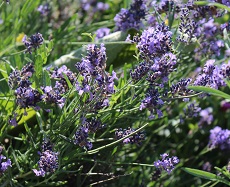 Herbal medicines have real effects, but they are complicated. The main active ingredients of lavender for instance are linalool, linalyl acetate, linalyl butyrate, volatile oil, cineol, pinene, limonene, camphor, geraniol, borneol and tannin.
Herbal medicines have real effects, but they are complicated. The main active ingredients of lavender for instance are linalool, linalyl acetate, linalyl butyrate, volatile oil, cineol, pinene, limonene, camphor, geraniol, borneol and tannin.
Each of these chemicals can do different things to the body though; and the % of each chemical varies between cultivars. Some cultivars of Lavendula angustifolia will contain very little camphor (which can be toxic if ingested in quantity), but many other lavender species are high in camphor.
Using herbs whether medicinally, in cooking or cosmetics can be a very positive thing; but it should be done with a proper understanding of the herb.
You can learn to understand and use herbs more safely and effectively by studying our 20 hour short course - great professional development for anyone working with food, medicine, cosmetics or in horticulture. An essential education for you own daily living. click here